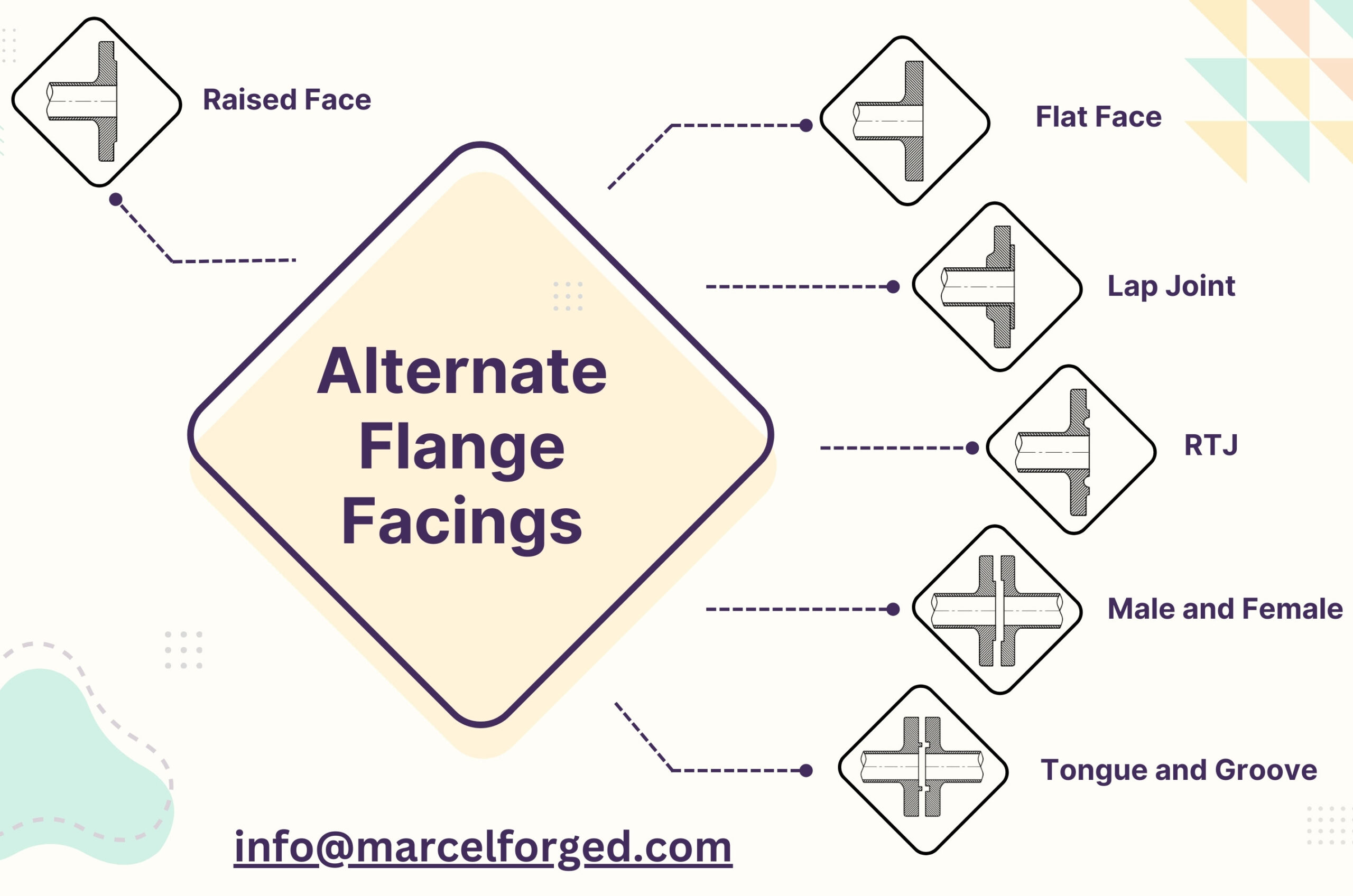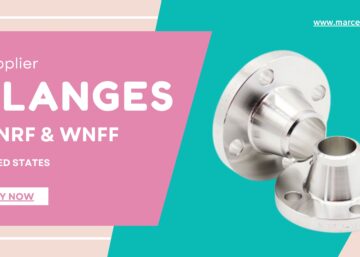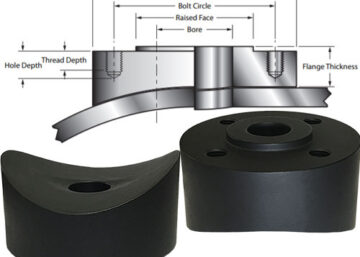Mastering Alternate Flange Facings: The Key to Piping System Efficiency
When it comes to industrial piping systems, ensuring a proper seal is paramount to prevent leaks, maintain pressure, and ensure safety. One key component in achieving this is the flange facing, the surface where the flange connects with the gasket and the mating flange. Different applications demand different types of flange facings, often referred to as alternate flange facings, to accommodate various pressure, temperature, and sealing requirements. In this blog, we’ll explore the most common types of alternate flange facings, their characteristics, and how they impact the performance of your piping system.
Marcel Piping Projects Supply PVT. LTD. specializes in manufacturing high-quality piping components, including flanges with various alternate facings, ensuring that your system operates efficiently and reliably.
Flat Face (FF)
A Flat Face (FF) flange features a completely flat surface where the gasket makes contact. This design is typically used in:
- Low-pressure applications.
- Situations where the flange material is relatively soft, such as cast iron or non-ferrous metals.
- Systems where bending forces should be minimized.
Key Characteristics:
- Pressure Rating: Usually available in Class 150 or Class 300.
- Temperature Range: Suitable for temperatures up to 400°C, depending on the material used.
- Applications: Low-pressure water, air, and other non-hazardous fluid systems.
Benefits:
- Simple and effective in low-pressure environments.
- Often used with full-face gaskets to evenly distribute pressure.
Flat Face (FF)
A Raised Face (RF) flange is one of the most common types used in industrial applications. The raised face area concentrates more pressure on the gasket, enhancing the sealing performance.
Key Characteristics:
- Pressure Rating: Available in Classes 150, 300, 600, 900, 1500, and 2500.
- Temperature Range: -29°C to 500°C (carbon steel).
- Dimensions: Raised face height is typically 1.6 mm for Classes up to 600 and 6.4 mm for Classes 900 and above.
- Applications: Suitable for a wide range of applications including chemical, oil, and gas industries.
Benefits:
- Enhanced sealing performance due to concentrated pressure on the gasket.
- Versatile and widely accepted in industrial piping systems.
Ring-Type Joint (RTJ)
In high-pressure and high-temperature applications, a Ring-Type Joint (RTJ) flange is commonly used. RTJ facings incorporate a machined groove where a metal ring gasket is placed, forming a strong metal-to-metal seal.
Key Characteristics:
Key Characteristics:
- Pressure Rating: Typically used in Classes 600, 900, 1500, and 2500.
- Temperature Range: Up to 540°C (stainless steel).
- Applications: High-pressure systems in oil and gas, petrochemical, and power generation industries.
Benefits:
- Superior sealing in high-pressure environments.
- Ideal for extreme temperatures and aggressive chemicals.
Tongue and Groove (T&G)
Tongue and Groove facings are precision machined so that one flange has a raised tongue and the other flange has a matching groove. When bolted together, these flanges create a tight seal.
Key Characteristics:
- Pressure Rating: Available in Class 150, 300, 600, 900, and 1500.
- Temperature Range: Up to 540°C.
- Applications: Often used in systems requiring leak-free sealing, such as steam and chemical lines.
Benefits:
- Self-aligning flanges that prevent gasket displacement.
- Excellent for high-pressure and high-temperature environments.
Male and Female (M&F)
Similar to the Tongue and Groove design, Male and Female (M&F) flanges have corresponding raised and recessed surfaces. This design ensures accurate alignment and proper gasket compression.
Key Characteristics:
- Pressure Rating: Available in Class 150 to 900.
- Temperature Range: Suitable for temperatures up to 540°C.
- Applications: Used in applications where precise alignment is critical, such as boiler systems.
Benefits:
- Reliable sealing performance.
- Prevents over-compression of the gasket, prolonging gasket life.
Lap Joint (LJ)
A Lap Joint Flange (LJ) is used in conjunction with a stub end and is not welded to the pipe, allowing easy removal and rotation for alignment. The flange itself does not make contact with the fluid in the pipe.
Key Characteristics:
- Pressure Rating: Common in Class 150, 300, and 600.
- Temperature Range: -29°C to 400°C.
- Applications: Typically used in low-pressure applications where frequent dismantling is required.
Benefits:
- Freedom to rotate for easier bolt hole alignment.
- Cost-effective for systems requiring frequent disassembly.
Selecting the Right Flange Facing for Your System
When selecting a flange facing, several factors must be considered:
- Pressure and Temperature Requirements: Higher pressure and temperature systems require stronger seals, such as RTJ or RF facings.
- Fluid Type: Corrosive or aggressive fluids may require specific materials and facings to prevent leaks.
- Gasket Compatibility: The flange facing should be compatible with the gasket material for optimal sealing.
Marcel Piping Projects Supply PVT. LTD. manufactures flanges with all these alternate facings, ensuring reliable performance across a variety of industrial applications. Our products meet ASME, API, and other international standards, ensuring that you receive the highest quality components for your piping systems.
Contact Us
For more information on flange facings and other piping components, feel free to contact us:
Email: info@marcelforged.com
Let Marcel Piping Projects Supply PVT. LTD. be your trusted partner in delivering top-quality flanges and fittings for your next project.








































